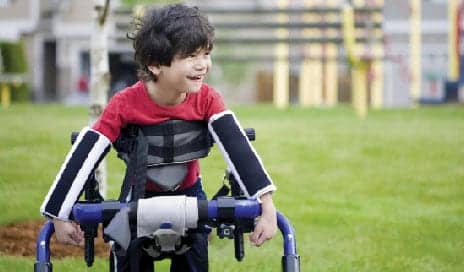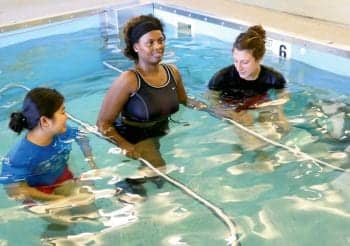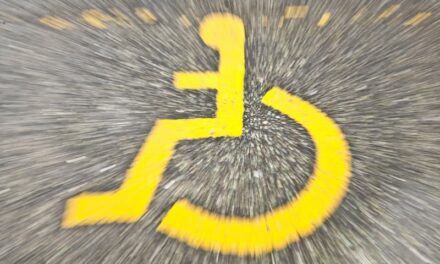Pediatric patients pose a unique challenge for practitioners when prescribing seating and mobility systems. It is necessary to obtain the best outcome for both the child and the family. All children learn and grow by exploration and experience. As clinicians who treat the smallest clients, we have the opportunity to begin mobility exploration early. Providing a child with the opportunity for self-directed mobility not only encourages gross motor movement, it also contributes to development of depth perception, object permanence, memory, and cognitive perceptual development—all of which are crucial components for child development.
There is evidence to support the use of powered mobility among clients as young as age 7 months who are affected by a wide range of diagnoses. Determinants of successful use of independent mobility devices have not been clearly defined, but what is known is that IQ is not a determining factor. Historically, children who have been able to succeed with self-directed mobility understand cause and effect. Even children who have shown limited motivation in other environments have been seen to actively engage once given the opportunity to explore under self-guided conditions.
Understand the Needs, Identify the Solution
Mobility options for a child who has special needs range from adaptive strollers, gait trainers, adaptive motorized toys, manual wheelchairs, power wheelchairs, and mobile standers. There are many variables to consider when contemplating which system is most appropriate for the pediatric client. Most importantly, it is paramount to consider the family’s needs and goals.
In addition to the family’s goals, it is important to consider the individual child’s physical, cognitive, and environmental needs. For example, although adaptive strollers are often the most convenient, aesthetically consistent with mobility of age-matched peers, and accessible to be used in multiple environments, they encourage the child to be a passive participant in the environment.
Options from Simple to Sophisticated
The best option for the pediatric client is the one that provides the child with free access to explore the various environments around them. Limited voluntary function and the need for supervision and direction should not preclude a child from having active mobility. Age-appropriate supervision is appreciated and may be required to maintain safety and enhance learning.
A low-tech and low-cost option is an adapted motorized toy. Low-cost toys, which are adapted for the needs of the individual child, enhance mobility within the home environment. These are not intended for community mobility and are customized to the child using household and hardware store products. Within the home, they provide a small child the sense of mobility and exploration that a child would not have when positioned in passive seating devices.
The options are limitless when adapting a motorized toy. With the investment of a little time and a lot of creativity, therapists can provide a child with a sense of normalcy as they move around in devices that their age-matched peers are also using for play, such as ride on toys.
If a child requires more customized seating, the clinician and family should consider power or manual mobility. Power and/or manual wheelchair mobility allow the child to be an active participant in both the home and the community. Previously, there were few options for small children. However, with improved understanding of the benefits of early mobility, the product development for children has increased exponentially.
When prescribing manual mobility for a small child, there are many options that require careful consideration. Positioning in a wheelchair is incredibly important and should not be taken lightly in the young population. As medical care improves for individuals affected by neuromuscular disorders, the individuals affected by these conditions are living longer than ever before. Children who are using manual wheelchairs are at great risk for overuse injuries in their upper extremities during their lifetime. Therapists need to consider that their pediatric clients need strong and healthy upper extremities to achieve independence in performing activities of daily living throughout the life span.
Additionally, as the pediatric client grows and enters puberty, that person will experience a number of musculoskeletal changes. Proper positioning and setup should be both lightweight and adjustable to change with the child and effectively position the pediatric client for safe and efficient propulsion.
Designed for the Growing User
In 2012, the Rehabilitation Engineering and Assistive Technology Society of North America published a position paper that states, “The ideal manual wheelchair is as light as possible, durable for long-term continuous use, custom-configured to meet the specific mobility and postural needs of the intended user, and the chair should have customizable rear wheel and caster wheel location and configuration.”1
Previously, manual wheelchairs intended for use by the pediatric client included growth capability built into the wheelchair. Although these chairs accounted for the changing needs of a pediatric client, to increase the life span of the wheelchair, the adjustability added a significant amount of weight to the product. Children were propelling wheelchairs weighing double their own weight.
With advancements in technology and “grow-up” programs being offered by manufacturers, the provision of an ultralight, adjustable, manual wheelchair has become a possibility. Consider, for instance, the axle location. An adjustable axle allows the clinician to position the rear wheels posterior of the child to provide stability for the new user. However, as the child becomes more skilled, the rear wheels can be moved anteriorly to improve maneuverability and place less stress on the shoulders and wrists.
Camber is also an option on ultralight manual wheelchairs built for the pediatric client. Camber improves maneuverability and brings the tires closer to the child to prevent excessive shoulder abduction and wrist flexion during propulsion. A child’s wheelchair that is set up with camber is generally narrow enough that it will still fit within doorways and, thus, avoid accessibility limitations that may otherwise occur for adults.
Although there are modifications that can be made to a highly adjustable, ultralight, manual wheelchair, power mobility may still be the best option. When deciding between power mobility and manual mobility, one should consider energy expenditure. Use of a manual wheelchair requires significantly more energy than what is required by a power wheelchair. If the child is unable to remain attentive to their other responsibilities in life, such as school, playing with peers, and activities of daily living, then power mobility should be considered.
The child’s quality of life and participation in other aspects of their world are likely to improve with the use of power mobility. With power mobility, a child moves further distances at a faster pace, keeping up with peers. Additional power controls, such as a seat elevator, allow a child easier access to the floor for age-appropriate play.
Positioning for Power
Positioning within a power wheelchair follows the same principles as positioning in a manual wheelchair. The child should be provided with the least restrictive seating system that is adjustable and can accommodate their growing needs. The cushion should facilitate a neutral pelvis when possible and be accommodating to the child with a fixed pelvic abnormality. Following prescription of the cushion, recommendations for the backrest and additional postural support can be made.
Use of adjustable, swing-away laterals can assist with maintaining neutral spine alignment. As the child grows, laterals can be offset and moved to provide optimal support and decrease risk of postural impairments that occur with growth spurts. Swing-away hardware improves ease of transfers, as children have a tendency to move multiple times per day, unlike their adult counterparts. Durability is also crucial, as pediatric clients tend to be more active than adult clients and, as therapists, we want to encourage this activity as much as possible. Attention should also be given to maintenance and durability due to the potential of repeated bowel and bladder accidents among the pediatric population.
Standing Systems and Gait Trainers
Children with severe physical disabilities also benefit from supported standing. Similar to adults, standing benefits the child by providing improved range of motion, weight-bearing through the lower extremities, tolerance to upright positioning, and trunk strengthening. The ability to stand and interact with the environment in various ways is crucial for development and confidence. Exploring the environment in the standing position allows children to have better access to the world in which they live.
There are a variety of mobile standing devices, including prone standers, that are designed to provide support anterior to the chest and sit-to-stand transfers. The specific design is based on the individual child’s positioning and functional needs. Typically, they require sufficient upper-extremity strength in order to propel, as these devices tend to be heavy.
Adaptive equipment such as a gait trainer can be used to enable lower-extremity weight-bearing activity, which is vital to healthy bone and muscle development. Gait trainers also may have utility in strengthening muscles and helping to raise levels of cardiovascular health and promoting functional endurance. These benefits can be had in addition to providing the user a means of greater independence with ambulation. Gait trainers can also be customized with a wide range of features such as swiveling or nonswivel wheels, a flip-down seat, and bumper guards. Some models are available with open fronts and are built to offer hands-free operation.
There are a variety of mobility devices available for children who require assistance in their efforts to explore their environments, learn, and develop. As providers, it is in our clients’ best interest to assess the child and family’s individual needs and provide recommendations that best facilitate age-appropriate independence, positive family interactions, and encourage healthy development. RM
Julie Cagney, DPT, is a clinical specialist at the International Center for Spinal Cord Injury at Kennedy Krieger Institute in Baltimore. She received her bachelor of science at the Pennsylvania State University in 2007 and her DPT from The University of Southern California in 2010. She completed her Pediatric PT Residency at Kennedy Krieger Institute, University of Maryland, and Johns Hopkins Hospital. She presents nationally on activity-based rehabilitation principles and their application in pediatrics. Her research interests are in pediatric assessment and treatment following neurological insult. She is experienced in wheelchair prescription, gait and orthotics, and developmental handling.
Meredith Budai, PT, DPT, ATP/SMS, is a clinical specialist at the International Center for Spinal Cord Injury at Kennedy Krieger Institute in Baltimore. She received her bachelor of science and bachelor of health sciences in 2006 and her Doctorate of Physical Therapy in 2008 from Duquesne University in Pittsburgh. Budai has been a certified assistive technology professional since 2011, a certified seating and mobility specialist since 2015, and is on the board of examiners for rare neurological disorders. She has presented nationally on activity-based rehabilitation principles and their application in pediatrics and with seating and positioning recommendations. Her clinical interests are pediatrics, functional electrical stimulation, casting and orthotics, and seating and mobility. She is experienced in wheelchair prescription, aquatic therapy, and land therapy for children and adults with neuromuscular diagnoses. For more information, contact [email protected].






